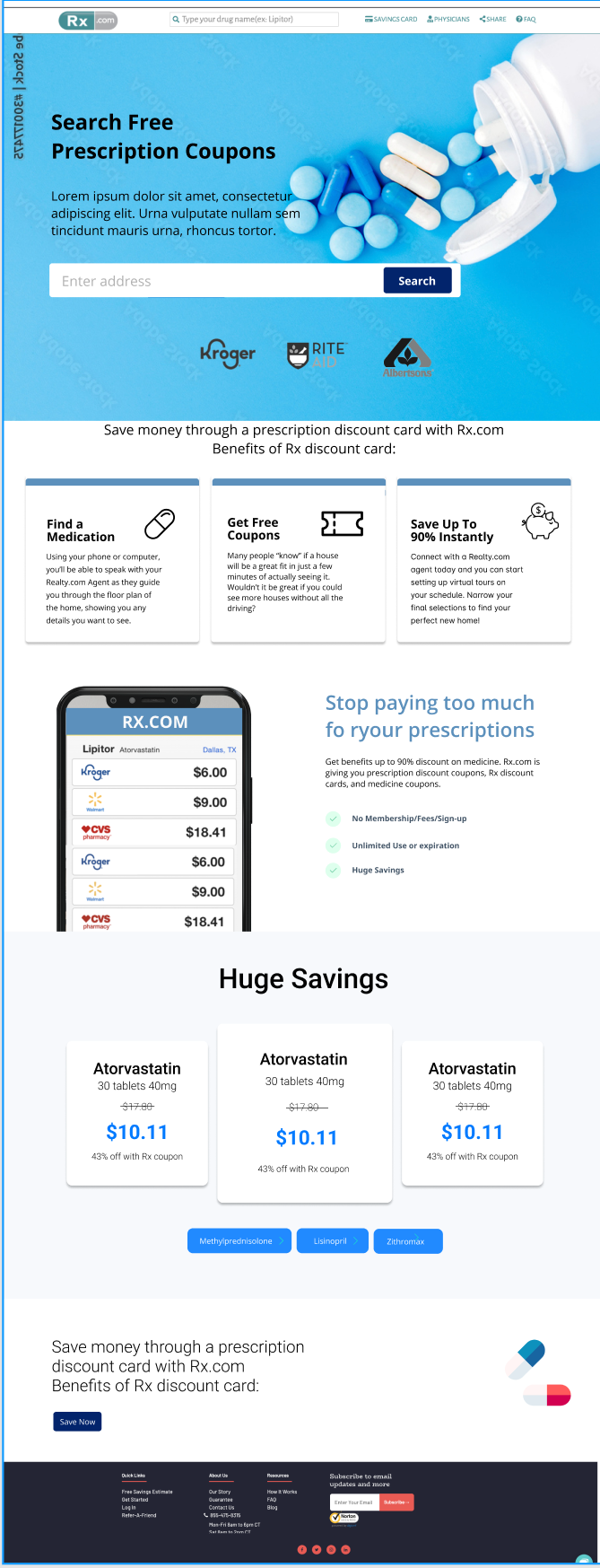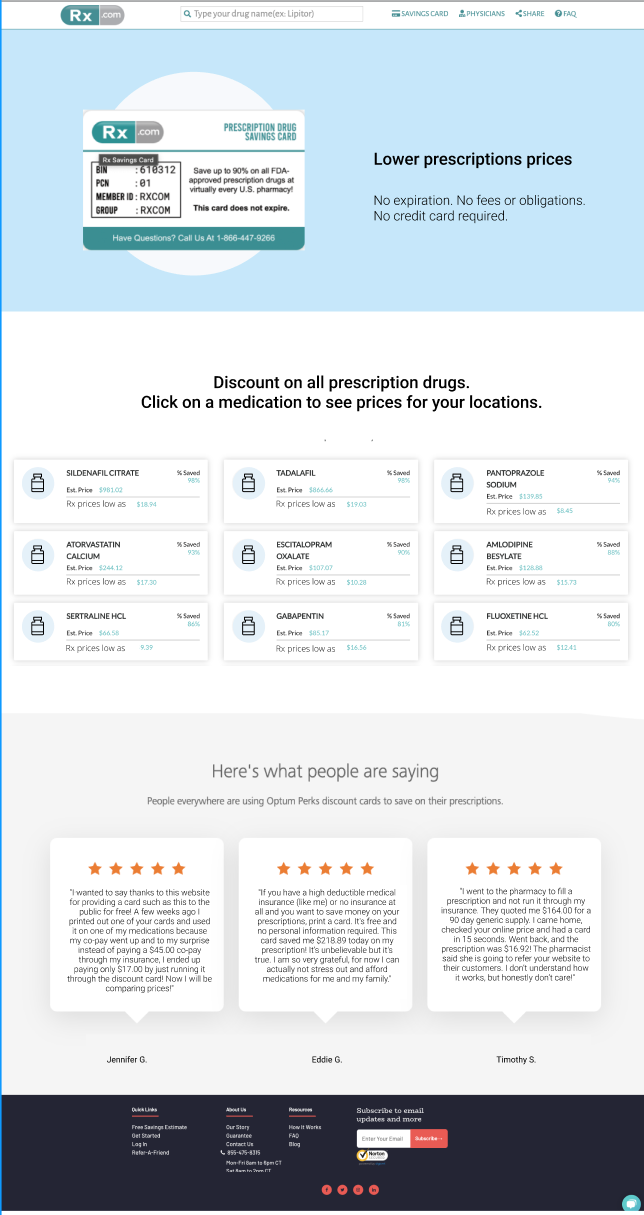2022. Rx.com was created as a redesign project at Realty.com. Assigned from CEO as a side project. To view the current site please live the Site button below.
Objective:
RX.com aimed to develop an intuitive prescription management platform to simplify the process for patients, healthcare providers, and pharmacists. The goal was to create a seamless experience for prescription ordering, tracking, and management.
Challenges:
•Designing a user-friendly interface that caters to a diverse user base, including patients and healthcare professionals.
•Ensuring secure and accurate management of prescription data.
•Incorporating features that facilitate easy communication between users and healthcare providers.
Research and Analysis
User Research:
Conducted user interviews, surveys, and focus groups to gather insights into the needs and pain points of patients, healthcare providers, and pharmacists. Key findings included:
•Patients needed a straightforward way to order and track prescriptions.
•Healthcare providers require an efficient method to manage and review prescriptions.
•Pharmacists value clear and organized prescription details to ensure accurate fulfillment.
Competitive Analysis:
Analyzed existing prescription management platforms to identify their strengths and weaknesses. This helped in understanding industry standards and finding opportunities for differentiation.
Personas:
Developed personas representing the primary user groups: patients managing their prescriptions, healthcare providers prescribing medications, and pharmacists fulfilling orders.
Design Process
Wireframing:
Created low-fidelity wireframes to outline the basic structure and layout of the platform. The focus was on ensuring logical navigation and easy access to key features for all user groups.
High-Fidelity Mockups:
Developed high-fidelity mockups incorporating RXcom's brand identity. Key features included:
•Dashboard: Comprehensive overview for patients, healthcare providers, and pharmacists.
•Prescription Management: Intuitive interface for viewing, ordering, and tracking prescriptions.
•Communication Tools: Secure messaging and notifications for seamless communication between users and healthcare providers.
•Profile Management: Easy-to-use interface for managing user profiles and prescription history.
Interactive Prototyping:
Created interactive prototypes using tools like Figma/InVision to simulate the user experience. This allowed for thorough testing and feedback collection before finalizing the design.
Usability Testing
Conducted usability testing with a diverse group of users to gather feedback on the design. Key findings included:
•Positive feedback on the clean and intuitive interface.
•Users appreciated the ease of managing and tracking prescriptions.
•Suggestions for improving the communication tools and adding more detailed prescription information.
Iterations:
Made necessary adjustments based on user feedback to enhance usability and overall user satisfaction. This included refining the communication tools and adding more comprehensive prescription details.
Project Scope
End-to-End Application, Branding
Tools
Figma, Miroboard, and Axure 10
Role
UX Designer (Research, Visual Design, Interaction Design, Usability Testing)Team
Team
Self Directed, UX Team, Product Owners, Stakeholders, and current users (Admin, Agents, Brokers, and Managers)
Duration
2 months
_______________________________________________________________________
Final Design
RXcom Platform:
•User-Friendly Dashboard: Clean and organized design providing an overview of prescription status.
•Efficient Prescription Management: Robust features for ordering, tracking, and managing prescriptions.
•Secure Communication Tools: Effective messaging and notification system to facilitate communication between users and healthcare providers.
•Detailed Profiles: Comprehensive and customizable profiles for managing prescription history and personal information.
Outcome and Impact
The redesign of the RXcom platform resulted in:
•Increased User Engagement: Significant increase in the number of active users and prescription orders.
•Higher Satisfaction Rates: Improved user satisfaction scores from patients, healthcare providers, and pharmacists.
•Streamlined Prescription Management: Notable reduction in the time and effort required to manage and track prescriptions.
Learnings and Reflections
This project emphasized the importance of user-centered design in creating effective healthcare solutions. The iterative design process and continuous user feedback were crucial in achieving a successful outcome. The positive impact on user engagement and satisfaction highlighted the value of thorough research, testing, and refinement.




